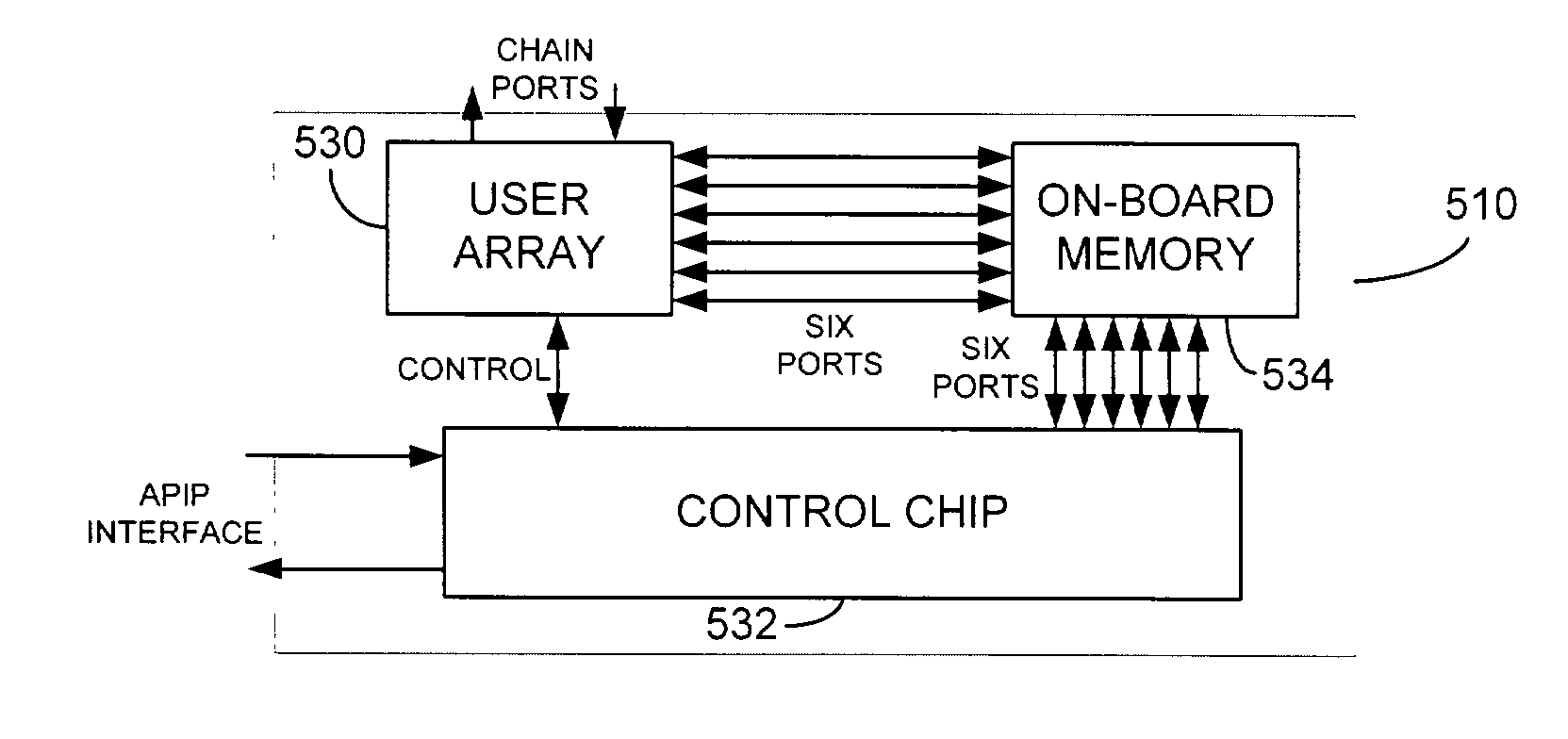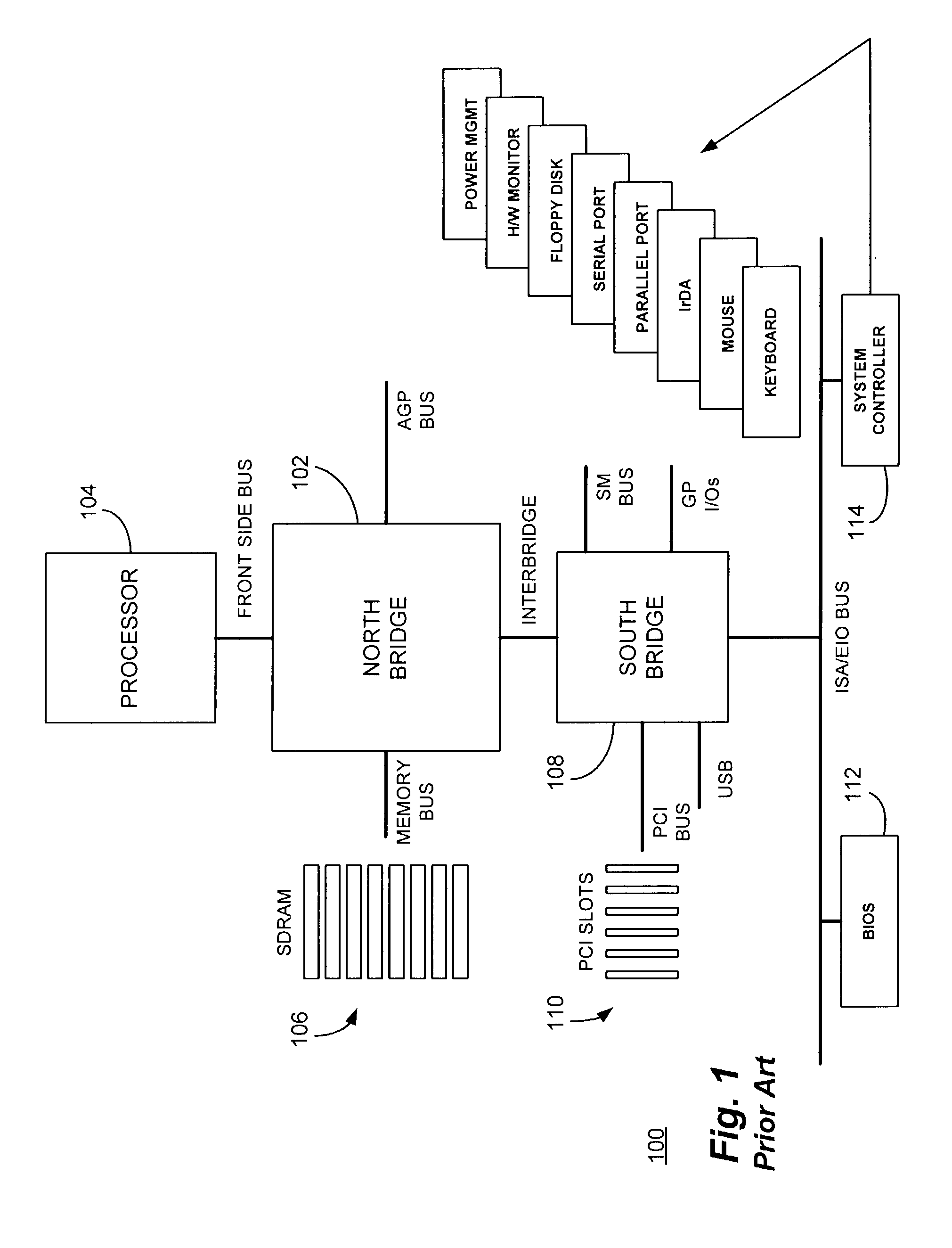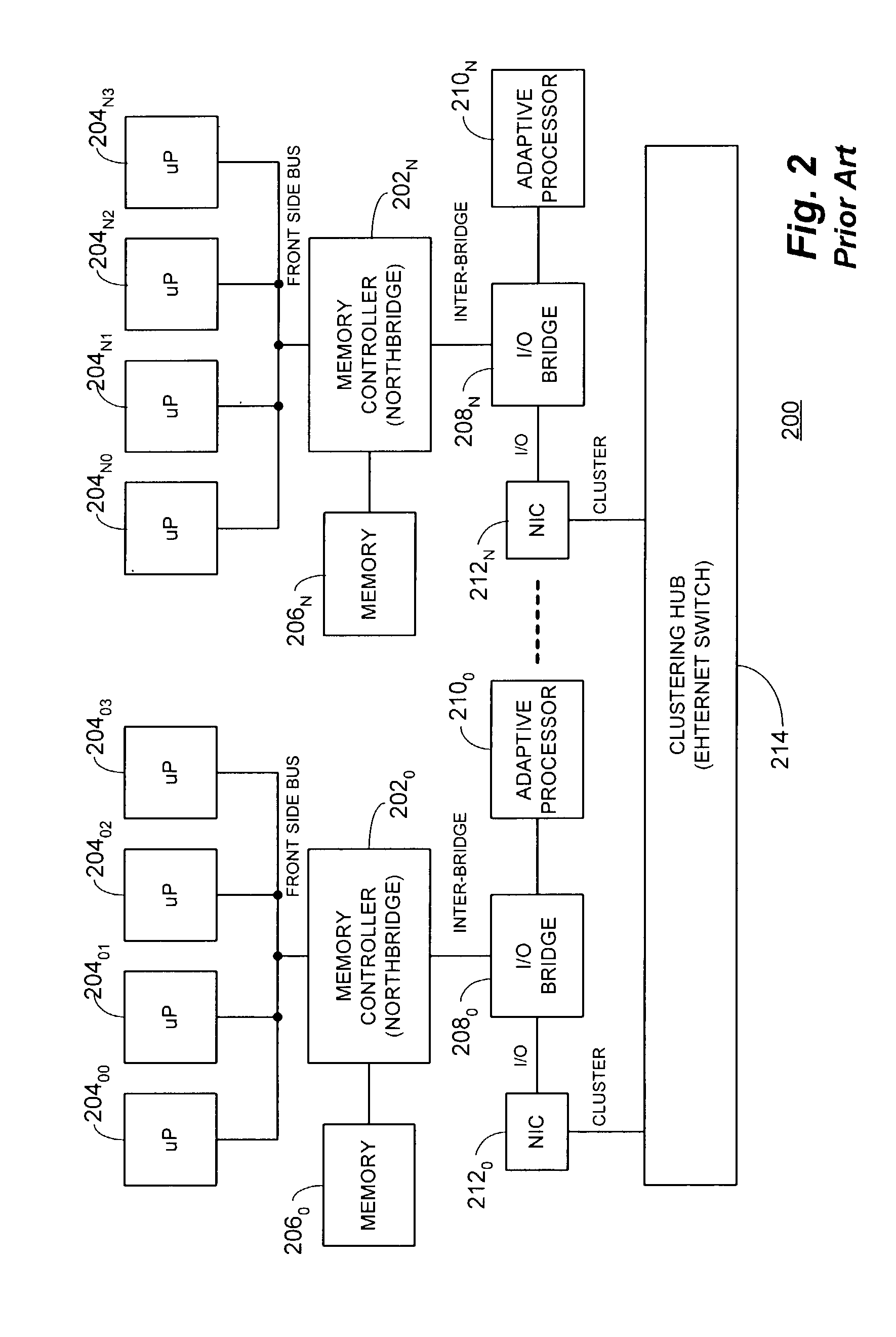Computer system architecture and memory controller for close-coupling within a hybrid processing system utilizing an adaptive processor interface port
a computer system architecture and memory controller technology, applied in the direction of electrical programme control, programming control, instruments, etc., can solve the problems of limiting the amount of processor interaction that can realistically occur, providing only a very loose coupling with low bandwidth and high latencies, and significantly reducing the performance of adaptive processors, so as to reduce protocol overhead, eliminate issues associated, and equal memory bandwidth and latency
- Summary
- Abstract
- Description
- Claims
- Application Information
AI Technical Summary
Benefits of technology
Problems solved by technology
Method used
Image
Examples
Embodiment Construction
[0025]With reference now to FIG. 1, a high-level functional block diagram of a typical computing system 100 is shown. The computing system 100 may be, for example, a personal computer (“PC”) which incorporates a commercially available integrated circuit (“IC”) memory controller (“North Bridge”) 102 such as the P4X333 / P4X400 devices available from VIA Technologies, Inc.; the M1647 device available from Acer Labs, Inc. and the 824430X device available from Intel Corporation. The North Bridge IC 102 is coupled by means of a Front Side Bus (“FSB”) to a processor 104 such as one of the Pentium® series of processors also available from Intel Corporation.
[0026]The North Bridge IC 102 is coupled via a separate memory bus to system memory 106 which may comprise, for example, a number of synchronous dynamic random access (“SDRAM”) memory modules. A dedicated accelerated graphics port (“AGP”) is provided for interfacing the system 100 to a graphics accelerator while an inter-bridge bus couples...
PUM
 Login to View More
Login to View More Abstract
Description
Claims
Application Information
 Login to View More
Login to View More - R&D
- Intellectual Property
- Life Sciences
- Materials
- Tech Scout
- Unparalleled Data Quality
- Higher Quality Content
- 60% Fewer Hallucinations
Browse by: Latest US Patents, China's latest patents, Technical Efficacy Thesaurus, Application Domain, Technology Topic, Popular Technical Reports.
© 2025 PatSnap. All rights reserved.Legal|Privacy policy|Modern Slavery Act Transparency Statement|Sitemap|About US| Contact US: help@patsnap.com



